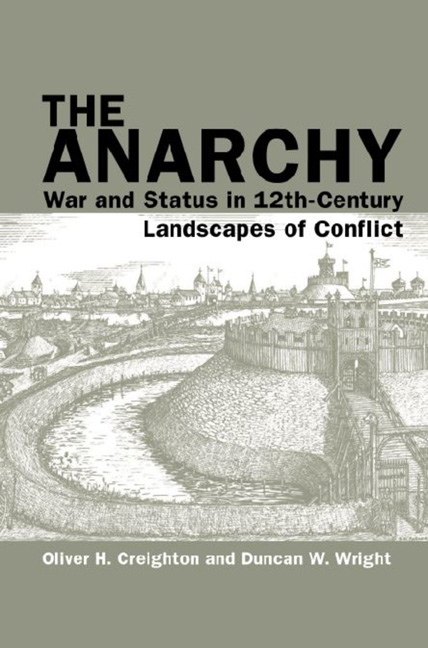Book contents
- Frontmatter
- Contents
- Acknowledgements
- List of Figures
- List of Colour Plates
- Chapter 1 Introduction
- Chapter 2 Historical Outline and the Geography of ‘Anarchy’
- Chapter 3 Waging War: Fields of Conflict and Siege Warfare
- Chapter 4 Architecture and Authority: Castles
- Chapter 5 Material Culture: From Arts to Coins
- Chapter 6 Performing Violence: Arms, Armour and Military Apparel
- Chapter 7 Faith and Fortification: The Church
- Chapter 8 Town, Village and Country
- Chapter 9 Anarchy on the Fen Edge: Case Study of the Isle of Ely
- Chapter 10 The Twelfth-Century Civil War in Context: Assessment and Reassessment
- Appendix Key Sites to Visit
- Bibliography
- Index
- Plate section
Chapter 2 - Historical Outline and the Geography of ‘Anarchy’
- Frontmatter
- Contents
- Acknowledgements
- List of Figures
- List of Colour Plates
- Chapter 1 Introduction
- Chapter 2 Historical Outline and the Geography of ‘Anarchy’
- Chapter 3 Waging War: Fields of Conflict and Siege Warfare
- Chapter 4 Architecture and Authority: Castles
- Chapter 5 Material Culture: From Arts to Coins
- Chapter 6 Performing Violence: Arms, Armour and Military Apparel
- Chapter 7 Faith and Fortification: The Church
- Chapter 8 Town, Village and Country
- Chapter 9 Anarchy on the Fen Edge: Case Study of the Isle of Ely
- Chapter 10 The Twelfth-Century Civil War in Context: Assessment and Reassessment
- Appendix Key Sites to Visit
- Bibliography
- Index
- Plate section
Summary
ALTHOUGH THE PRINCIPAL FOCUS of this book is on England in the middle decades of the twelfth century, it is instructive to first provide a sketch of life in town and country between the Norman Conquest and the year of King Stephen's accession in 1135. What was the overall shape of English society, how was the landscape organised and what were the main processes of social, economic and political change then in train? The second part of this chapter provides a year-by-year chronology of Stephen's reign (1135–54) as essential background for the thematic chapters that follow.
Anglo-Norman England before 1135
While the Battle of Hastings in 1066 was a shattering military defeat for the English and cataclysmic for the native aristocracy, the predominant view among archaeologists is that in the aftermath of the Norman Conquest life for the overwhelming majority of the population carried on pretty much as before. That the face on silver pennies changed while the monetary system remained essentially untouched is something of a metaphor for understanding the impact of the Conquest at the grass roots – this was an elite takeover that saw business as usual for the English economy and little or no immediate change to the essential rhythms of everyday life, at least for most.1 Indeed, the key categories of material evidence speak of continuity rather than change: burial practice, pottery and building techniques show little or no sign of any hiatus or radical difference either side of 1066, and archaeologists usually adopt the label ‘Saxo-Norman’ for items of material culture and sculpture that could equally be attributed a pre- or post-Conquest date.
The very small number of Norman-French place names in the English landscape highlight that this was an aristocratic conquest rather than a mass folk movement – most namings, such as Montacute, Somerset (‘pointed hill’) and Belvoir, Leicestershire (‘beautiful view’) marked new Norman capita (estate centres).
Military devastation was localised rather than general, principally affecting the zone of south-east England that was in the path of the advancing Norman army in 1066, and later those regions where rebellions were vigorously stamped out, including northern Yorkshire and the Isle of Ely. Overall, we see little physical evidence of any rupture in society.
- Type
- Chapter
- Information
- The AnarchyWar and Status in 12th-Century Landscapes of Conflict, pp. 13 - 33Publisher: Liverpool University PressPrint publication year: 2017



